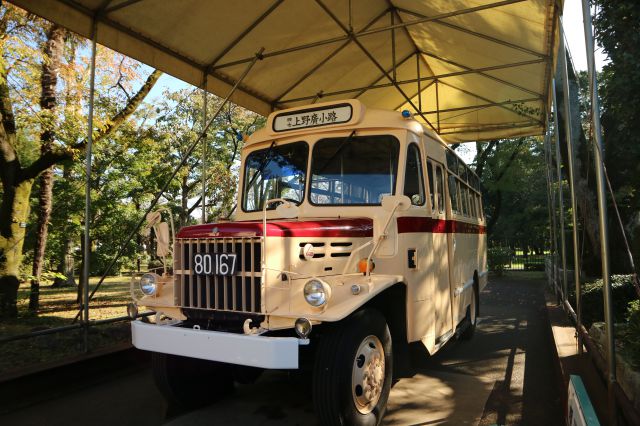
The Edo-Tokyo Open Air Architectural Museum is an open-air museum opened in Koganei Park in Koganei City, Tokyo in 1993. Meticulously reconstructed and restored, preserving them for present and future generations to admire and learn from, historic buildings of high cultural value from the Edo to early Showa eras are on show in the museum’s park-like grounds.
The entire site covers about 7 hectares, and once you enter the park you’ll feel like you have taken a ride back in time to a Japan of bygone eras.
-
01
The Layout of Edo-Tokyo Open Air Architectural Museum
The Edo-Tokyo Open Air Architectural Museum is divided into three zones where you can see a range of buildings. You’ll be happy to know that photography is allowed in these zones.
・West Zone
Here you’ll find restored houses that display a variety of architectural styles. You’ll see mansions that were regarded as luxury homes during their heydays, and wandering further west will lead you towards traditional-style, thatched roof houses.
・Center zone
In this zone, buildings and historical structures such as gates are restored and displayed, including the Visitor Center and an exhibition room showing items from the old Musashino Folk Museum (which was the predecessor to the present open air museum).
・East Zone
This zone hosts a recreation of a classic, traditional Japanese downtown area, featuring a variety of restored buildings such as merchant houses, inns, and public baths, giving us a glimpse of how life looked during days gone by. Inside the restored buildings you’ll find exhibits of daily household items, products and work tools of the era.Edo-Tokyo Open Air Architectural Museum
-
02
Kodakarayu "子宝湯" (1929)
It is said that Kodakarayu is the model used for the bathhouse Aburaya, which appeared in the 2001 animated film "Spirited Away".
![Kodakarayu]()
Kodakarayu
The building resembles a Japanese shrine or temple, and is very representative of Tokyo public bathhouses of its era.
The large karahafu (entrance gate) features a sculpture of the Seven Lucky Gods, and typical of bathhouses of its time the ceilings are high and the interior is spacious.Kodakarayu
Kodakarayu
Kodakarayu
The bathhouse features interesting artwork also, such as a large painting of Mt. Fuji, and the men's and women's baths both use tiles that were designed with images from Japanese folk tales.
Kodakarayu
-
03
Takei Sanshodo "武居三省堂" (1927)
Takei Sanshodo is a stationery store founded in the early Meiji era. Initially the store was run as a wholesaler of calligraphy supplies, but later became a retail stationery store.
The tiled building is an example of a dual purpose merchant residence and shop known as “kanban kenchiku” (signboard architecture), one of many which were built after the Great Kanto earthquake.Takei Sanshodo
Takei Sanshodo
Takei Sanshodo
The herbal boxes at Kamaki's workplace in "Spirited Away" are said to be modeled after the drawers along the wall inside Takei Sanshodo.
Takei Sanshodo
-
04
Maruni Shoten "丸二商店" (early Showa period)
This is a general household goods store built in the early Showa era (c.1920-1930) which is characterized by the clever and attractive combination of small pieces of copper plate that form the patterns which decorate the front of the building.
Maruni Shoten
The interior of the store is arranged to replicate its appearance in the 1930’s, and tenement housing has been built behind the store to represent how the street would have looked when the building was originally built.
Maruni Shoten
Maruni Shoten
Maruni Shoten
-
05
― Tokyo municipally designated tangible cultural properties
-
06
Kunio Maekawa's House "前川國男邸" (1942)
This house belonged to Kunio Maekawa (1905-1986), a renowned Japanese architect, built in 1942 in Shinagawa, Tokyo.
Kunio Maekawa's House
The house was dismantled in 1973 when Maekawa decided to build a larger home at the property, and it was kept in its dismantled state at a villa in Karuizawa. Thankfully it was later donated to the Edo Open Air Museum and rebuilt there in 1996 for visitors to come and enjoy.
Maekawa, a disciple of famed Swiss architect Le Corbusier, designed over 200 buildings throughout 50 years of activity and was one of the most prolific architects in the 20th century, and is known as the leading architect in postwar Japanese modernism.
The traditional Japanese-style influenced Maekawa House is a masterpiece that emanates the spirit of Japanese wooden modernism.Kunio Maekawa's House
Kunio Maekawa's House
Kunio Maekawa's House
-
07
Tokiwadai Photo Studio "常盤台写真場"(1937)
Originally located in Tokyo’s Tokiwadai, an area known as a “healthy residential area”, this building was once home to the Tokiwadai Photo Studio.
Tokiwadai Photo Studio
The studio was operational during an era when photography lighting was still in its infancy, and the large north-facing windows on the building’s second floor were frosted as a means to achieve the most ideal levels of illumination for photography.
Tokiwadai Photo Studio
You are welcome to take a commemorative photo here with your own camera (free of charge).
Tokiwadai Photo Studio
Tokiwadai Photo Studio
-
08
Outdoor exhibits (1871-1929)
In addition to the buildings, Edo-Tokyo Open Air Architectural Museum also features other outdoor historical exhibits, such as the old train and bus mentioned below.
Bonnet bus
・Bonnet bus "ボンネットバス"(1968)
This bonnet bus is an improvement of the "TS11" developed by Isuzu Motors after the war, and was used on the current Fuji Express. This is a classic old school Japanese bus which lovers of automotive history will definitely enjoy.Toden 7500
・Toden 7500 "都電7500形"(1962)
The Toden 7500 is a tram that ran from Shibuya Station to Shimbashi, Hamacho Nakanohashi and (Kanda) Sudamachi. With the rapid increase in Tokyo’s traffic volume, the Toden and most other trams were abolished in 1963, but the 7500 did remain operational until 2011 on the Toden Arakawa Line. You can take a look around inside the train.Toden 7500
-
09
― Take a break at a restaurant!
-
10
Restaurant "Kura"
At this restaurant you can eat handmade udon and other dishes that convey the Japanese traditional taste of Musashino.
● Opening hours
Weekdays:
11: 00-15: 30
Saturday, Sunday and public holidays:
April - September: 11: 00 to 16:30
October - March: 11: 00-16: 00Kura
Kura
-
11
Cafe "Musashino Sabō"
Coffee and meals can be enjoyed in the reconstructed architecture House of Georg de Lalande.
● Opening hours
April-September / 10: 30-17: 00 (Last order 16:30)
October-March / 10: 30-16: 30 (Last order 16:00)Musashino Sabō
-
12
Barrier Free Information
Many barrier-free facilities have been set up in the park for people with disabilities and also the elderly:
Ramps and Elevators
Ramps are installed at the entrance of buildings, and the majority of buildings with more than one floor have elevators also.
Wheelchairs and Strollers
You can enter and view the park using if you use a wheelchair or have a stroller, but please be aware that some buildings may not be accessible. Wheelchairs and strollers are also available to use for free.
Multipurpose Toilet etc.
There are six multipurpose toilets in the park (wheelchair accessible), and two of those toilets are suitable for ostomates and have large beds.Barrier Free Information
-
13
Access
5 minutes by bus from the north exit of Musashi Koganei Station on the JR Chuo Line.
Take the Seibu bus, get off at Koganei Park West Exit, then walk for 5 minutes.
Please refer to the here for illustrated guides.Edo-Tokyo Open Air Architectural Museum
- Edo-Tokyo Open-air Architectural Museum
-
4.5
355 Reviews -
-
- Tokyo Koganeishi Sakurachou 3-7-1 In the Metropolitan Koganei Park
-
-
-
- 0423883300
-
-
-
- [Apr.- Sep.]9:30-17:30[Oct.-…
-
View AllPark Avene Kokubunji
5-13-25 Nukuikitamachi Musashino Tokyo
































 Go here
Go here










